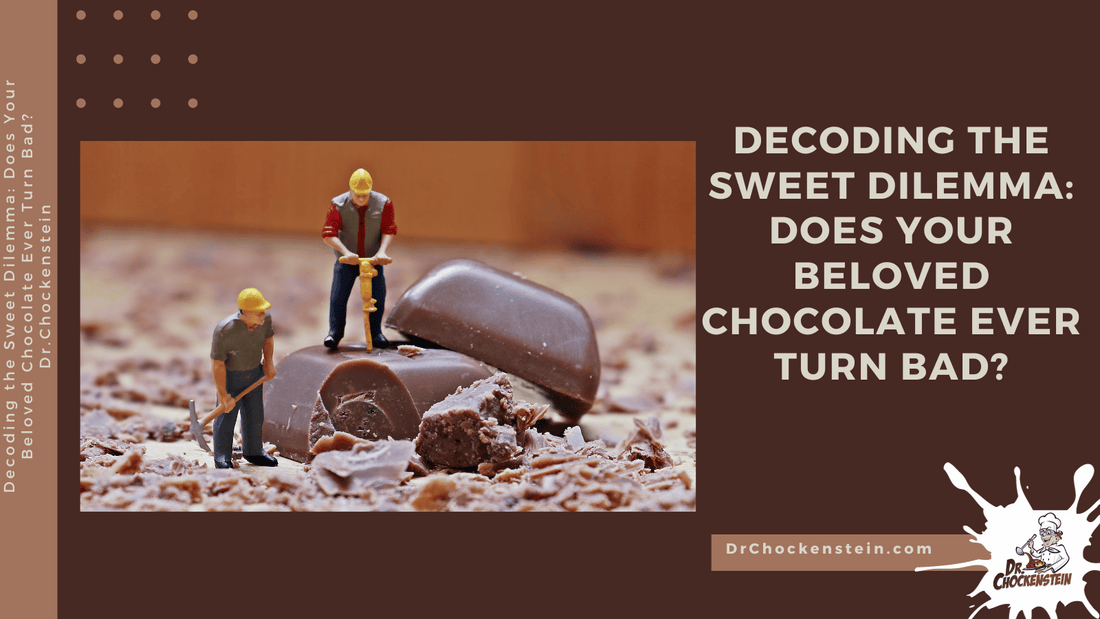
Decoding the Sweet Dilemma: Does Your Beloved Chocolate Ever Turn Bad?
Share
Does Chocolate Go Bad Over Time?
Welcome to the delightful world of chocolate! As passionate chocolate enthusiasts, we understand the joy this treat brings. However, it's crucial to explore the nuances of chocolate storage for optimal quality and longevity.
Does Chocolate Go Bad Over Time?
Yes, chocolate can go bad due to factors like improper storage, heat exposure, and moisture. These elements impact taste, texture, and overall quality.
When Does Chocolate Expire?
Expiration varies; milk and white chocolate last 8-12 months, dark chocolate up to 2 years. Proper storage—cool, dry, dark—may extend its safety beyond the best-before date. Always check for specific expiration dates and signs of spoilage.
What is the Best Way to Store Chocolate?
Store chocolate in a cool, dry place (60-70°F or 15-21°C, humidity < 50%) in an airtight container or original packaging to ward off moisture, odors, and air. Avoid refrigeration, which can cause sugar or fat bloom. Check out our post Avoiding Disaster in the Kitchen: How to Combat Chocolate Bloom. If refrigerating, tightly wrap and let it return to room temperature before consuming.
Is it Safe to Eat Expired Chocolate?
Generally safe if stored well, but check for spoilage signs. Changes in taste, texture, or appearance due to sugar or fat bloom don't make it unsafe. Discard if you spot mold, unusual odors, or off-coloration. Read more about
How Can You Tell if Chocolate Has Gone Bad?
Check for white powdery appearance (sugar bloom), dry or crumbly texture, off odors, stale taste, or visible mold. These signs may indicate spoilage, but remember that changes don't necessarily make it unsafe.
Should You Store Chocolate in the Fridge?
Avoid refrigerating to maintain taste and texture. If necessary, tightly wrap and gradually bring it to room temperature to prevent sugar or fat bloom. Store between 60°F and 68°F (15°C and 20°C).
What Are the White Spots That Sometimes Appear On Chocolate?
White spots are likely sugar or fat bloom caused by moisture or temperature fluctuations. While harmless, they may affect texture and flavor. Proper storage minimizes this occurrence. Read more about Why chocolate turns white.
An Expert's Opinion
Chocolate undergoes changes like oxidation, crystallization, bloom, aroma absorption, and microbial spoilage over time. Preserve quality by storing it properly—cool, dry, dark, away from moisture, odors, and sunlight. Always buy chocolate from a chocolatier for the best experience.
Final Notes On If Chocolate Goes Bad Over Time
Chocolate does age, influenced by storage conditions, ingredients, and type. Despite changes in appearance, texture, and flavor, properly stored chocolate can last months or even years.
Always check expiration dates, discard if spoilage signs are evident, and relish your chocolate at its peak for the ultimate taste experience.
If you've enjoyed this post, please share it with a friend. Don't miss out on future sweet discussions—subscribe for more tempting tales and tips. Until next time, may your chocolate be rich, your moments sweet, and your cravings satisfied. Cheers to the chocolate lovers' everywhere.
